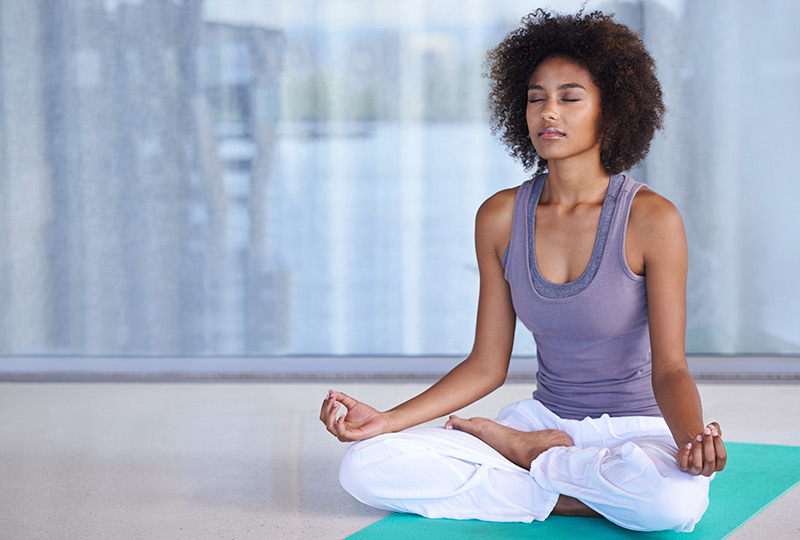Feeling overwhelmed? You’re not alone. When life gets hectic, our body’s stress response can go into overdrive. The good news is that one of the most powerful tools for reclaiming your calm is already at your disposal: your own body. Moving more is a scientifically-backed strategy for effective stress management.
Exercise works by reducing stress hormones like cortisol and adrenaline while encouraging the production of endorphins—your brain’s natural mood lifters. Whether it’s a brisk walk around the block or a calming yoga session, regular physical activity can help you manage anxiety, sleep better, and build resilience against whatever life throws your way.
How Physical Activity Reduces Stress
Ever notice how a simple walk can clear your head? That feeling isn’t just in your imagination; it’s rooted in science. When you engage in physical activity, you trigger a cascade of positive changes in your brain and body that directly combat stress.

The Neurochemical Benefits of Exercise
At its core, exercise is a form of physical stress. But by putting your body through this controlled stress, you’re actually training it to better handle mental and emotional stress. Here’s what happens inside your brain:
- Endorphin Release: Physical activity stimulates the production of beta-endorphins, which are neurotransmitters that act as natural painkillers and mood elevators. This is the mechanism behind the famous “runner’s high.”
- Stress Hormone Regulation: According to Harvard Health, exercise helps lower the body’s levels of stress hormones, namely cortisol and adrenaline, over time. Consistent activity helps your body become more efficient at managing the physiological response to stressors.
- Boosts in Feel-Good Chemicals: Exercise also increases the availability of other mood-boosting neurotransmitters like serotonin and dopamine, which help regulate mood, sleep, and appetite.
Psychological and Behavioral Benefits
Beyond the brain chemistry, the act of moving has profound psychological advantages. It serves as a form of “meditation in motion,” shifting your focus away from daily worries and onto the physical sensations of your body.
This mental break helps interrupt the cycle of negative thoughts that can feed anxiety. Achieving fitness goals, no matter how small, boosts self-confidence and provides a tangible sense of accomplishment. Plus, joining a class or working out with a friend can offer valuable social connection, another key buffer against the negative stress effects on body.
Best Types of Physical Activities for Stress Relief
While almost any form of movement is beneficial, certain activities are particularly effective at promoting relaxation and mental clarity. The best exercise for you is ultimately the one you enjoy and will stick with. Here are some proven options to explore.
Aerobic Exercise
Cardiovascular exercises get your heart pumping and are fantastic for producing endorphins. Activities like brisk walking, jogging, cycling, swimming, and dancing are excellent choices. You don’t need to run a marathon; even 20-30 minutes of moderate-intensity activity can have significant anti-anxiety effects.

Mind-Body Practices
Practices like yoga, tai chi, and Pilates are exceptional for stress relief because they combine physical postures with deep breathing and mindfulness. This combination is highly effective at activating the parasympathetic nervous system, which is your body’s “rest and digest” state. These activities help lower your heart rate, reduce blood pressure, and ease muscle tension. If you’re interested in mindfulness, exploring meditation for stress management can be a great complement.
Strength and Resistance Training
You don’t need to be a bodybuilder to reap the stress-reducing benefits of strength training. Using weights, resistance bands, or even your own bodyweight (think push-ups, squats, and lunges) helps release endorphins. Focusing on your form and the physical effort can also provide a powerful mental distraction, and building strength fosters a sense of empowerment.
Swimming and Water Activities
Swimming offers a unique, full-body workout that is especially calming. The rhythmic nature of the strokes and the feeling of weightlessness in the water can be incredibly meditative. The cool water can also be therapeutic, helping to soothe both the body and the mind.
Walking in Nature
Combining exercise with nature is a potent stress-buster. Research has shown that walking in a natural environment can decrease activity in the part of the brain associated with rumination (repetitive negative thoughts). A simple walk in a park exposes you to fresh air and sunlight, which helps your body produce Vitamin D, a nutrient linked to improved mood.
Team Sports and Recreational Activities
Engaging in sports like tennis, basketball, or soccer provides not only physical benefits but also social ones. The camaraderie and playful competition can be a fantastic distraction from daily stressors and help foster a sense of belonging.
Gentle Movement and Stretching
Never underestimate the power of a good stretch. When we’re stressed, we often hold tension in our muscles, particularly in the neck, shoulders, and back. Gentle stretching and flexibility work can release this physical tension, sending a signal to your brain that it’s okay to relax.
How Much Exercise Do You Need for Stress Reduction?
According to the CDC, adults should aim for at least 150 minutes of moderate-intensity aerobic activity or 75 minutes of vigorous-intensity aerobic activity per week, combined with two days of muscle-strengthening activity.
However, don’t let those numbers intimidate you. Even 5-10 minutes of movement can start to provide anti-anxiety benefits. Consistency is more important than intensity or duration when you’re starting out.
Short Bursts vs. Long Sessions
Finding a 30-minute block of time can be challenging. The good news is that you can break it up. Three 10-minute walks throughout the day can be just as effective for your health and stress levels as one 30-minute session. This approach can make it much easier to fit exercise into a busy schedule, especially for those dealing with stress at work.
Quick Stress-Relief Exercises You Can Do Anywhere
Sometimes you need relief right in the moment. These simple exercises require no equipment and can be done almost anywhere.

Deep Breathing and Diaphragmatic Breathing
This is one of the fastest ways to lower your stress response. By breathing deeply into your belly, you engage the vagus nerve, which activates your relaxation response.
- Sit or lie down comfortably. Place one hand on your chest and the other on your stomach.
- Inhale slowly through your nose for a count of four, feeling your stomach rise. Your chest should remain relatively still.
- Hold your breath for a moment.
- Exhale slowly through your mouth for a count of six, feeling your stomach fall.
- Repeat for several minutes.
This simple technique is a cornerstone of deep breathing for stress management.
Progressive Muscle Relaxation
This technique involves tensing and then releasing different muscle groups to achieve a state of deep physical relaxation.
- Start with your feet. Tense the muscles for five seconds, then release for 30 seconds, noticing the difference.
- Move up to your calves, thighs, glutes, abdomen, arms, and so on, until you’ve tensed and released all major muscle groups up to your face.
Getting Started with Exercise for Stress Management
Starting a new routine can feel daunting, but it doesn’t have to be. The key is to start small and choose activities you genuinely enjoy.
- Start Slow: If you’re new to exercise, begin with 10-15 minute sessions and gradually increase the duration and intensity.
- Set Realistic Goals: Aim for consistency, not perfection. A 15-minute walk three times a week is a great starting point.
- Find an Accountability Partner: Sharing your goals with a friend can help you stay motivated.
- Reframe Your Mindset: Think of exercise not as a chore, but as a vital act of self-care—an appointment with yourself that you deserve to keep.
When Exercise Might Increase Stress
While typically beneficial, it’s important to maintain a healthy balance. Overtraining, not allowing for proper rest and recovery, or becoming obsessive about routines can turn exercise into another source of stress. Listen to your body. Rest days are essential for recovery and preventing injury. If you feel that your relationship with exercise is causing more anxiety than it relieves, it may be helpful to speak with a healthcare provider or a mental health professional.
Combining Exercise with Other Stress Management Techniques
Physical activity is a powerful piece of the puzzle, but it works best as part of a holistic approach. For a well-rounded strategy, consider pairing your fitness routine with other healthy habits.
Ensuring you get adequate sleep, maintaining social connections, and practicing mindfulness are all crucial.
Ultimately, integrating movement into your life is a profound way to care for your mental health. It’s not about punishment or pushing past your limits every day. It’s about finding joy in moving your body and giving your mind the break it deserves. For more tips on living a balanced life, explore the resources here at Not One Type


You may also like this
Meditation for Stress Management: 11 Proven Techniques
Stress affects millions of Americans daily, triggering physical and emotional responses that can impact overall...
Nov
How to Overcome Decision Fatigue: 10 Proven Strategies to Reclaim Your Mental Energy
Ever get to the end of the day and feel like you can’t even decide...
Nov
Stress Management: Proven Strategies to Reduce Stress and Improve Wellbeing
Stress is a universal human experience. It’s that feeling of being overwhelmed when your to-do...
Nov
Deep Breathing for Stress Management: Techniques to Calm Your Mind and Body
Breathing. It’s the first thing we do when we enter the world and the last...
Nov
Stress at Work: Causes, Signs, and Proven Strategies to Manage Workplace Stress
Stress at work affects millions of employees worldwide, leading to decreased productivity, health problems, and...
Nov
Why Am I Stressed for No Reason? 8 Hidden Causes Explained
Feeling stressed without a clear reason is more common than you might think. It’s that...
Nov